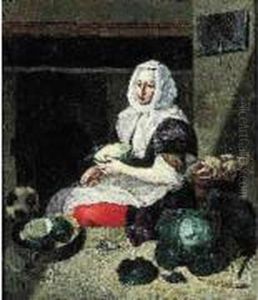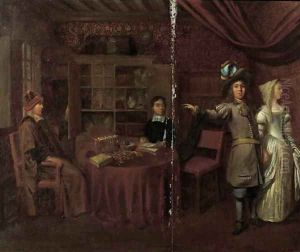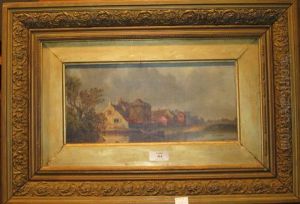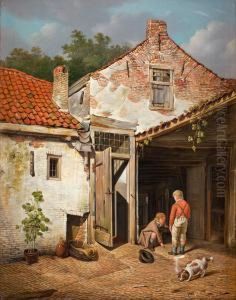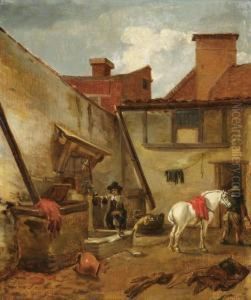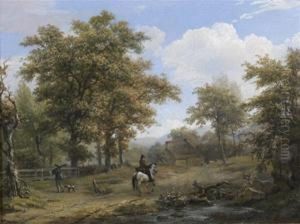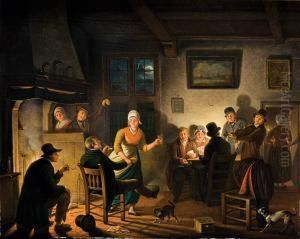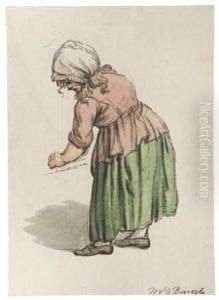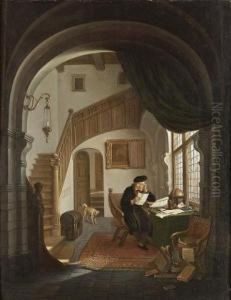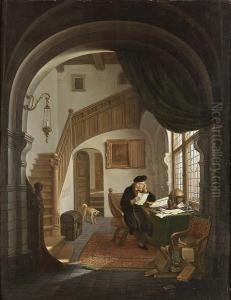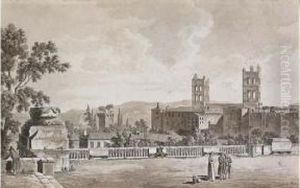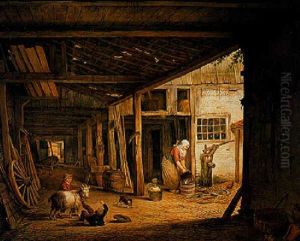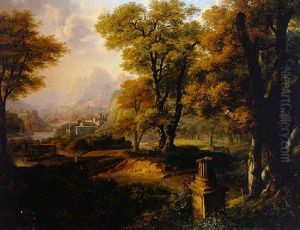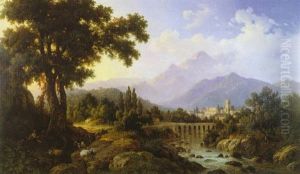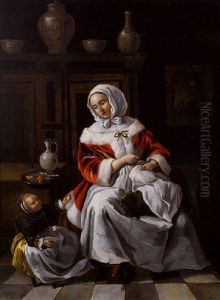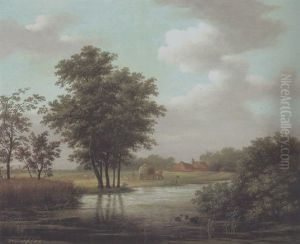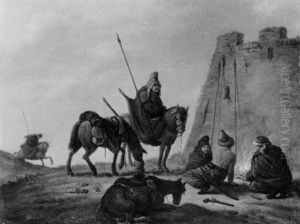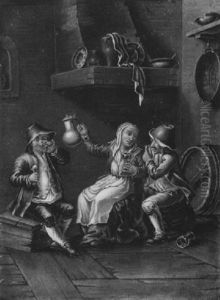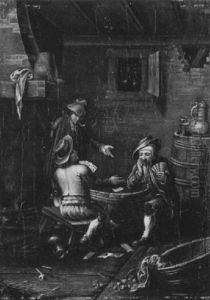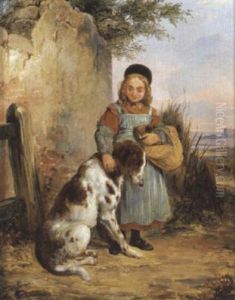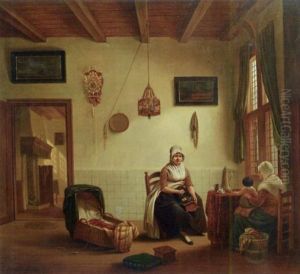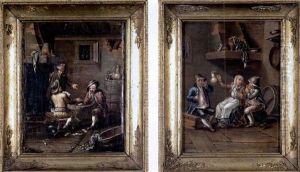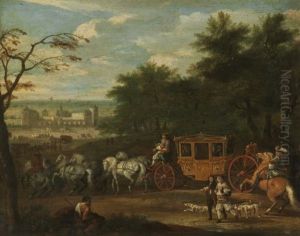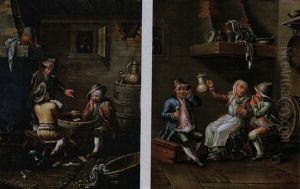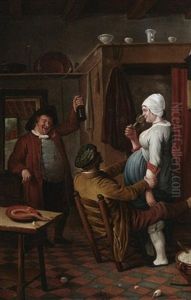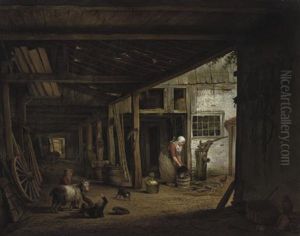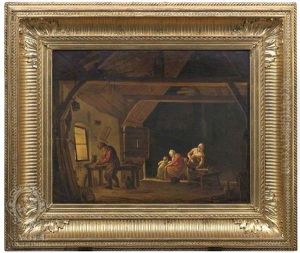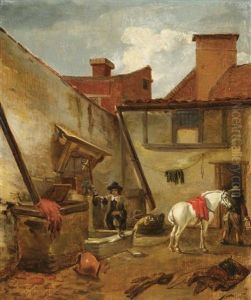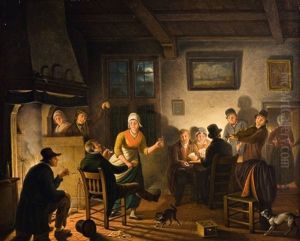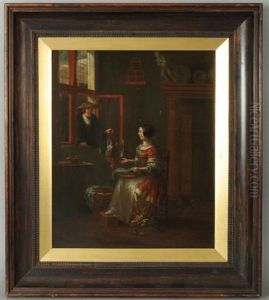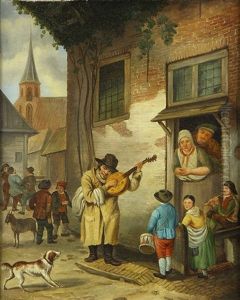Hendrick Van Der Burgh Paintings
Hendrick van der Burgh was a Dutch Golden Age painter, whose life details are not well-documented, leading to some uncertainty about his biography. His exact date of birth is not known, but he is believed to have been active as a painter in the mid-17th century. Van der Burgh's work is mainly known for its genre scenes, which often depicted figures in taverns or domestic environments engaging in everyday activities such as smoking, drinking, or making music.
Van der Burgh was likely born in Leiden, in the Dutch Republic, as he is sometimes referred to as Hendrick van der Burgh of Leiden. His style suggests that he was influenced by the fijnschilders (fine painters) of Leiden, such as Gerrit Dou, Frans van Mieris, and Godfried Schalcken, who were renowned for their highly detailed and polished painting technique.
Despite the scarcity of information about his personal life, Van der Burgh's paintings suggest that he had a keen interest in the portrayal of light and shadow, as well as the psychological interactions between his subjects. His works often include subtle moralistic or humorous undertones, reflecting the genre painting tradition of the Dutch Golden Age.
There are no records of his apprenticeship or the masters with whom he might have studied. However, the quality of his work indicates that he received a solid artistic training. Van der Burgh’s works were appreciated during his time, and today, they can be found in various art museums and private collections, offering a glimpse into the cultural and social life of the 17th-century Dutch Republic.
Unfortunately, similar to his birth, the exact circumstances of Hendrick van der Burgh's death are also unclear, but he is believed to have died around 1668. His legacy continues through the small number of paintings he left behind, which continue to be studied and admired for their contribution to the genre painting of the Dutch Golden Age.
